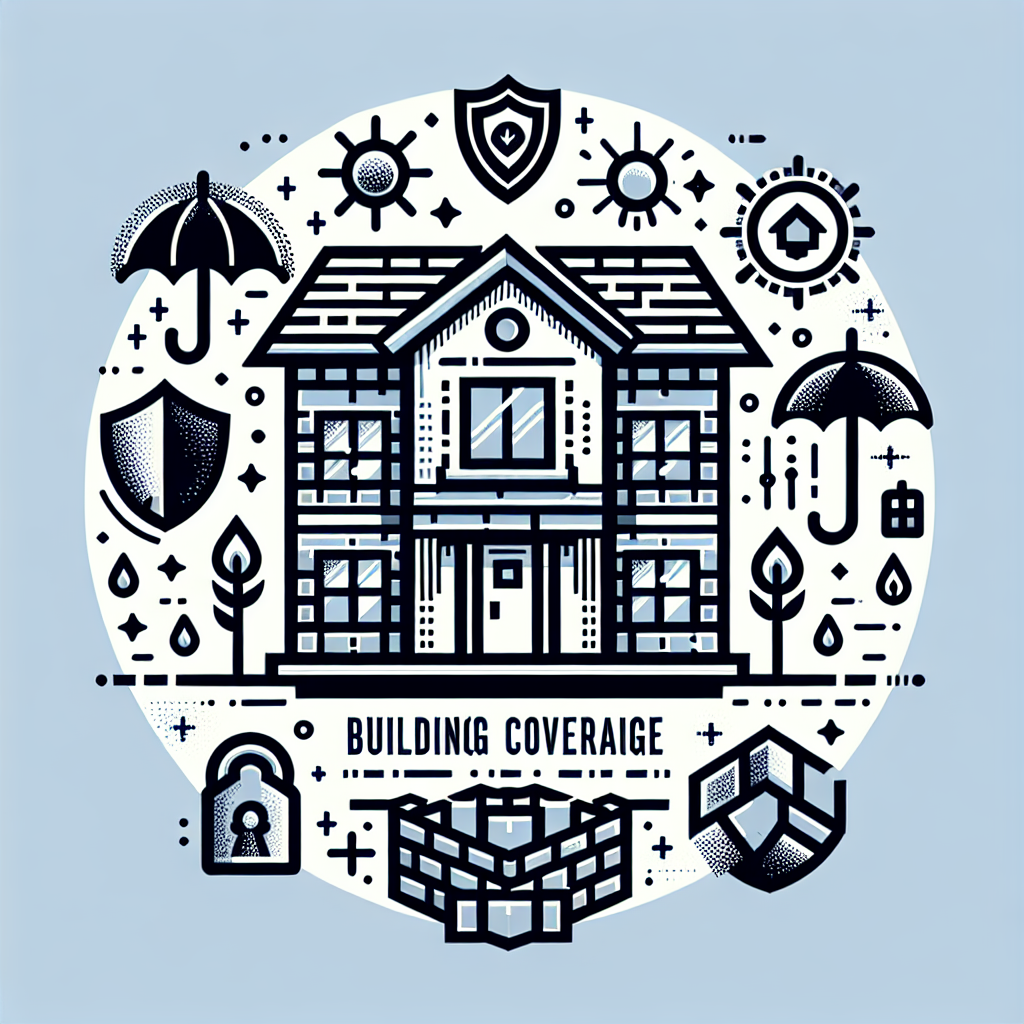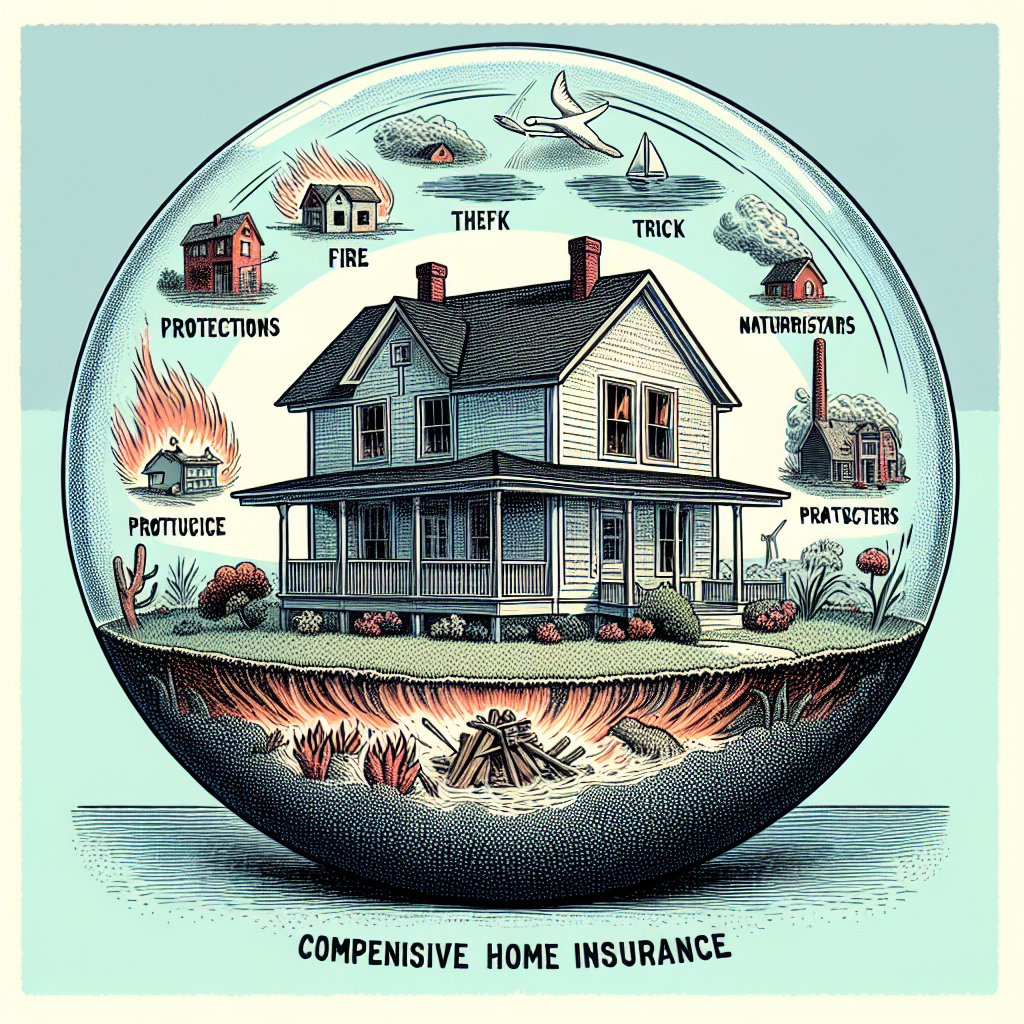Filed under Home Insurance on
Recommended Home Insurance Coverage Amounts Guide

Home insurance isn’t a set-it-and-forget-it purchase. The right limits protect your biggest asset from rising construction costs, lawsuits, and increasingly severe weather. Yet many homeowners quietly carry outdated limits tied to what they paid for the property years ago. This Recommended Home Insurance Coverage Amounts Guide explains how to choose smart coverage levels, what typical benchmarks look like, and how to adapt your policy to your home, location, and budget. By the end, you’ll know how to run your own numbers and have a confident, evidence-based conversation with your agent or broker.
Why coverage amounts should track rebuild cost, not market value
Insurance pays to rebuild your house after a covered loss—not to repurchase it on the open market. Market value bundles in land and neighborhood demand, which insurers don’t replace. Your target should be the full cost to reconstruct your home as it stands today, with similar materials, craftsmanship, and to current code. That rebuild cost has climbed sharply in recent years due to labor shortages, supply chain swings, and code updates. Construction cost indexes from sources such as the Bureau of Labor Statistics and industry analysts like CoreLogic and Verisk have shown multi-year inflation since 2020. If your limits lag, you’ll shoulder the shortfall when it matters most.
At-a-glance targets most homeowners can start with
Every home is different, but there are common anchor points used by carriers and risk advisors. Consider these as a starting framework, then refine based on your home’s specs and regional risks.
- Dwelling (Coverage A): 100% of the home’s estimated replacement cost, ideally with extended replacement cost (+10% to +50%) or guaranteed replacement cost if available.
- Other Structures (Coverage B): Typically 10% of dwelling; increase if you have large detached garages, workshops, fences, retaining walls, or a pool house.
- Personal Property (Coverage C): Commonly 50% to 70% of dwelling; opt for replacement cost coverage rather than actual cash value.
- Loss of Use/Additional Living Expense (Coverage D): Often 20% to 30% of dwelling; boost if local rents are high or rebuild times are long.
- Personal Liability: At least $300,000; many advisors recommend $500,000 or more. Consider a $1 million to $5 million umbrella policy for higher net worth or elevated risk profiles.
- Medical Payments to Others: $1,000 to $5,000 is common; higher limits are inexpensive and can smooth minor injury claims.
- Deductible: Align with your emergency fund. Many choose $1,000 to $2,500; separate percentage deductibles often apply for wind/hail or named storms.
How to calculate dwelling coverage the right way
The backbone of any policy is Coverage A—what it costs to rebuild. A robust estimate beats a guess every time.
Step 1: Determine local rebuild cost per square foot
Start with your finished square footage. Multiply by a realistic local cost per square foot. For a standard home, this might range dramatically by region and finish level. Entry-level builds can be far lower than custom or historic properties with high-end materials. A builder, contractor, or your agent’s replacement cost estimator can refine the number. Update it annually to track inflation and material volatility.
Step 2: Adjust for architectural complexity and materials
- Unique features: Custom millwork, masonry, slate roofing, imported tile, or intricate staircases increase cost.
- Complex layouts: More corners, dormers, or multiple stories typically mean higher labor and waste factors.
- Mechanical systems: Geothermal, radiant heat, or whole-house automation elevate replacement cost.
- Historical elements: Reproducing period details can require specialized trades and longer timelines.
Step 3: Account for code upgrades and debris removal
Ordinance or law coverage pays for required code upgrades after a loss—think electrical, seismic strapping, or energy standards. Debris removal, site access challenges, and temporary structural supports also add cost. Many carriers include modest amounts automatically, but older homes or hillside lots may warrant higher limits.
Step 4: Choose a replacement cost option
- Replacement Cost (RC): Rebuilds without depreciation; your goal is to set the limit high enough to cover the whole job.
- Extended Replacement Cost: Adds a buffer, usually 10% to 50% beyond your limit, to absorb inflation or underestimation.
- Guaranteed Replacement Cost: Covers the full rebuild regardless of limit; availability varies by state and carrier.
Example calculation
Suppose your 2,200-square-foot home costs an estimated $275 per square foot to rebuild based on local quotes and finish level. Your base replacement cost would be $605,000. If you secure a 25% extended replacement endorsement, your effective ceiling becomes about $756,250. That buffer protects you against mid-project price jumps, a common pain point since 2020.
Other structures: Don’t forget what’s not attached
Coverage B typically defaults to 10% of your dwelling limit. That may be fine for a simple fence and small shed. But if you have a detached garage, solar carport, studio, gazebo, retaining walls, long fencing runs, or a pool with hardscaping, take inventory and add up potential replacement costs. Increase Coverage B as needed to avoid tapping your dwelling limit for outbuildings.
Personal property: Make sure the numbers match your lifestyle
Coverage C often defaults to 50% or 70% of dwelling coverage. For many households, that’s workable, but the only way to be sure is to inventory your belongings. Use a room-by-room list with ballpark values, and keep receipts or photos where possible. Many homeowners underestimate clothing, kitchenware, tools, and hobby gear—items that add up quickly in a total loss.
Replacement cost vs. actual cash value
Replacement cost coverage pays what it takes to buy new equivalents today. Actual cash value subtracts depreciation; that’s a tough hit on electronics, furniture, and apparel. Replacement cost coverage for personal property usually costs a bit more, but for most households it’s well worth it.
High-value items need special treatment
- Jewelry, watches, and fine art: Standard policies cap these categories—sometimes at just $1,500 to $5,000 per item. Schedule high-value items with appraisals to avoid gaps.
- Collectibles and instruments: Specialized endorsements or separate policies may offer better coverage terms and valuation.
- Home business property: Equipment and inventory often have low sublimits; consider a rider or a business policy if you store or sell from home.
Loss of use: Budget for time, not just materials
After a major loss, you may need to live elsewhere for months while your home is rebuilt. Coverage D pays for additional living expenses such as temporary housing, increased meal costs, and extra commuting. With rebuilds taking longer in many markets, a 20% to 30% limit relative to dwelling coverage is becoming a more realistic target—especially where rental prices are high. Some policies offer a time limit (e.g., 12 to 24 months) rather than a dollar cap; understand which you have.
Liability and medical payments: Quietly vital coverage
Liability protects your assets if someone is injured on your property or if you’re found responsible for property damage or injuries elsewhere. It also helps cover legal defense costs, which can spiral quickly.
How much liability do you need?
- Minimum: $300,000 is a practical floor for most households; many advisors suggest $500,000.
- Considerations for higher limits: A pool, trampoline, dog bite exposure, significant assets, teenage drivers, frequent entertaining, or volunteer roles may warrant higher coverage.
- Umbrella policy: For broader protection, a $1 million to $5 million umbrella is often cost-effective and can extend over home, auto, and some recreational liability risks.
Medical payments to others
Med pay is a goodwill coverage that pays small medical bills without determining fault. Limits of $1,000 to $5,000 are typical; moving to $5,000 is usually inexpensive and can help minor incidents from escalating.
Deductibles and special perils: Understand what you’ll pay first
Your deductible is what you pay out of pocket before insurance responds. Higher deductibles lower premiums but require a sturdier emergency fund. Many policies now apply separate percentage deductibles (1% to 5% of dwelling coverage) for wind/hail or named storms in coastal or hail-prone states. Wildfire-prone regions may introduce distinct deductibles or coverage conditions as well.
Earthquake and flood are separate
Standard home insurance doesn’t cover earthquakes or floods. You’ll need earthquake coverage (standalone or endorsed, depending on state) and a flood policy, often through the National Flood Insurance Program or a private carrier. If either hazard is plausible where you live—even outside high-risk zones—evaluate the cost of at least a modest limit to protect against catastrophic loss.
Endorsements that often pay for themselves
- Inflation guard: Automatically nudges your dwelling limit up during the policy term. Still review annually; inflation guard can lag real costs.
- Ordinance or law: Boosts coverage for code-required upgrades. Older homes or areas with strict building codes benefit from higher percentages (often 10% to 25% of dwelling).
- Water backup and sump overflow: Common and costly; choose $10,000 to $25,000 or more depending on finished basements and plumbing age.
- Service line: Covers underground utility lines on your property—water, sewer, electric—often $10,000 to $25,000 limits.
- Equipment breakdown: Protects HVAC, appliances, and home systems from mechanical or electrical failure.
- Special personal property: Broadens named-peril coverage to open-peril for contents in some policies.
Regional and home-type nuances
Condos and co-ops (HO-6)
Condo owners don’t insure the building shell the same way as single-family homes, but don’t assume the association has you fully covered. You usually need:
- Dwelling/Improvements (Coverage A on HO-6): Covers interior build-out—flooring, cabinets, fixtures, and any upgrades.
- Personal property: Similar approach to homeowners; consider replacement cost and scheduling valuables.
- Loss assessment: Protects against your share of assessments for covered losses to common areas; limits of $25,000 to $100,000 are common.
Renters (HO-4)
Renters don’t insure the structure, but they should carry robust personal property, loss of use, and liability. A quick benchmark is to inventory belongings and then select a limit that matches replacement cost; many renters underestimate clothing and electronics. Liability at $300,000 or $500,000 is still sensible and typically inexpensive.
High-value or custom homes
Consider insurers specializing in high-net-worth properties. They offer broader coverage, higher sublimits, risk consulting, and flexible valuations. Guaranteed replacement cost, higher ordinance or law coverage, and bespoke endorsements are more readily available in this tier.
Older or historic homes
Historic or antique construction (plaster walls, custom windows, hand-hewn beams) can significantly elevate rebuild costs. Work with a carrier that understands historic restoration and bump up code upgrade endorsements. Replacement cost estimators must account for specialized labor and sourcing.
Short-term rentals and home-sharing
Occasional rentals may require endorsements; regular short-term rentals often need a specialized landlord or home-sharing policy. Coverage gaps arise around vandalism, theft by a guest, or lost income—ask for a policy designed for your usage pattern.
Trends shaping coverage decisions
Insurance isn’t static. Several industry trends should inform your limits:
- Persistent construction inflation: Labor tightness and materials volatility continue to push rebuild costs. Industry indexes from the Bureau of Labor Statistics, CoreLogic, and Verisk show cumulative increases since 2020 that justify higher limits and extended replacement buffers.
- Weather severity and frequency: More frequent, costly convective storms and wildfire seasons elevate claim severities and lengthen rebuild times. Loss of use limits may need a refresh in affected regions.
- Carrier underwriting shifts: In some states, insurers have tightened underwriting and raised deductibles for wind or hail. Knowing your special deductibles helps avoid surprises during a claim.
- Building code evolution: Energy efficiency, seismic retrofit, and resilience standards add cost to modern rebuilds; ordinance or law coverage matters more each year.
Common mistakes that lead to shortfalls
- Using purchase price as a coverage proxy: Land value inflates the number while ignoring rebuild specifics.
- Ignoring renovations: Kitchen and bath upgrades, additions, and custom finishes should trigger an immediate coverage review.
- Underinsuring other structures: Detached buildings and hardscaping are easy to overlook until they’re damaged.
- Accepting actual cash value for contents: Depreciation can gut payouts; replacement cost is the safer choice for most homeowners.
- Skipping endorsements: Water backup, service lines, and ordinance or law are frequent claim drivers.
- Not understanding special deductibles: Percentage deductibles can be large in dollar terms during a major loss.
A step-by-step plan to set your limits
- Measure and document: Confirm finished square footage; note special features, finishes, systems, and any upgrades.
- Estimate replacement cost: Use an insurer or contractor estimator; cross-check with local builders for cost per square foot.
- Select a buffer: Add extended or guaranteed replacement cost if offered in your area.
- Right-size other structures: Inventory outbuildings, fences, hardscaping, pools; raise Coverage B if needed.
- Inventory contents: Tally major categories and high-value items; choose replacement cost and schedule valuables.
- Set loss of use: Consider local rents and rebuild timelines; aim for 20% to 30% of dwelling coverage or a generous time limit.
- Choose liability: Start at $300,000 to $500,000; layer an umbrella policy if assets or risk factors warrant it.
- Fine-tune endorsements: Ordinance or law, water backup, service line, equipment breakdown, and any regional needs such as earthquake.
- Align deductibles with savings: Pick a deductible you can comfortably cover; understand any special percentage deductibles.
- Review annually: Update after renovations, major purchases, or life events; confirm inflation guard is keeping pace.
FAQs
Is 80% coverage okay if I want to save on premiums?
Most policies include conditions requiring you to insure to value—often 80% or more of replacement cost—to avoid partial loss penalties. Insuring to 100% plus an extended replacement buffer is a safer strategy and often necessary to avoid coinsurance-like reductions.
How often should I update my limits?
Review annually and after any renovation or material purchase. Given construction volatility, many owners now refresh midterm if they take on major projects or if local building costs shift.
If my mortgage lender requires a certain amount, is that enough?
Lender requirements protect the lender’s interest, not necessarily yours. They may be lower than true replacement cost. Confirm with an independent estimate and set limits accordingly.
What if I can’t get guaranteed replacement cost in my state?
Extended replacement cost is widely available and provides valuable cushion. Choose the highest extension you can reasonably afford and revisit annually.
Do smart home devices reduce coverage needs?
They may reduce risk and qualify for discounts, but they don’t change rebuild costs. Keep your coverage aligned with construction realities, not gadgetry.
What a strong policy looks like
Putting it all together, a resilient home policy aligns with today’s costs, anticipates tomorrow’s inflation, and supports how you actually live. It carries full replacement cost for the structure, realistic limits for other structures and personal property, generous loss of use, and liability that can handle serious claims—often backed by an umbrella. Layer on targeted endorsements for modern risks like water backup and service line failure, and you’ve built a policy that can absorb shocks without derailing your finances.
Key takeaways you can act on this week
- Verify your dwelling limit against a fresh replacement cost estimate; add an extended or guaranteed replacement rider if available.
- Boost other structures if you have significant detached improvements or fencing.
- Switch personal property to replacement cost and schedule high-value items.
- Raise loss of use if local rents and rebuild times suggest higher needs.
- Set liability at $500,000 and evaluate an umbrella policy.
- Add ordinance or law, water backup, and service line if they fit your home’s age and systems.
- Confirm deductibles—especially wind/hail or named storm percentages—and ensure you can cover them if a claim hits.
Final word
A well-built policy is more than a stack of numbers—it’s a plan that holds together when life doesn’t. Use this Recommended Home Insurance Coverage Amounts Guide to calibrate your limits to real-world costs, not wishful thinking. Revisit your choices annually, and don’t be shy about asking your agent for detailed replacement cost worksheets or builder input. Your home deserves a policy that can truly rebuild it, and your finances deserve coverage that can weather a worst-case day without becoming one.
Editor’s notes on sources and credibility
This article draws on common carrier guidelines, market data, and observations from claim trends reported by industry groups such as the Insurance Information Institute, the National Association of Insurance Commissioners, and construction cost analyses from organizations that track building materials and labor. While data points fluctuate by region and season, the directional trend since 2020 has been consistent: higher rebuild costs, longer rebuild timelines, and greater variability by location. That’s exactly why revisiting your numbers yearly is a practical best practice.
Use this guide to start the conversation
Make your next policy review practical: arrive with square footage, a quick inventory, details on upgrades, and a short list of endorsements to consider. Share this Recommended Home Insurance Coverage Amounts Guide with anyone in your household who helps make financial decisions. And if your home or situation is unique—a historic property, extensive outbuildings, frequent rentals—ask for a tailored quote that reflects those realities. The right numbers today are the difference between a quick recovery and a long, expensive rebuild tomorrow.
Ready for a quick checklist?
- Dwelling: 100% of replacement cost with an extension or guarantee
- Other structures: Match actual detached improvements, not defaults
- Personal property: Replacement cost, inventory verified, valuables scheduled
- Loss of use: 20% to 30% of dwelling or robust time-based limit
- Liability: $300,000 to $500,000 minimum; umbrella for added protection
- Medical payments: $5,000 for smoother small claims
- Endorsements: Ordinance or law, water backup, service line, equipment breakdown
- Special perils: Separate earthquake and flood if risk exists
- Deductibles: Understand all, including percentage deductibles
- Annual review: Update after renovations and major purchases
Closing thought
A policy crafted with care is a financial safety net you hope to never test. With this Recommended Home Insurance Coverage Amounts Guide, you have a clear, practical framework to set limits that reflect how homes are actually built—and rebuilt—today. Protect the structure, protect your lifestyle, and protect your future with coverage that keeps pace with the real world.





